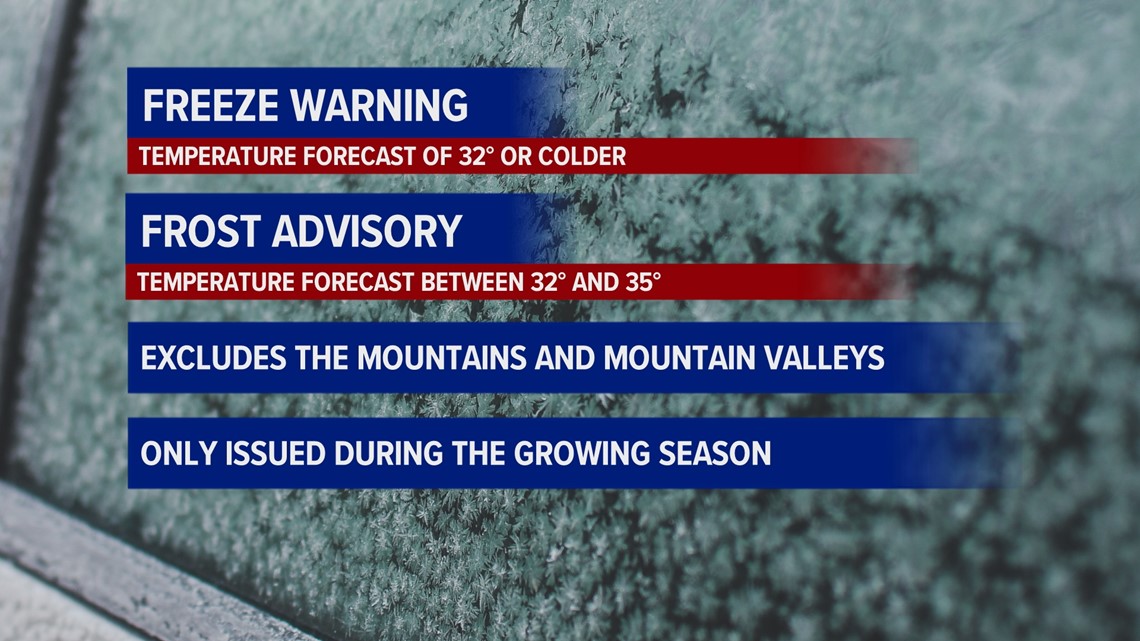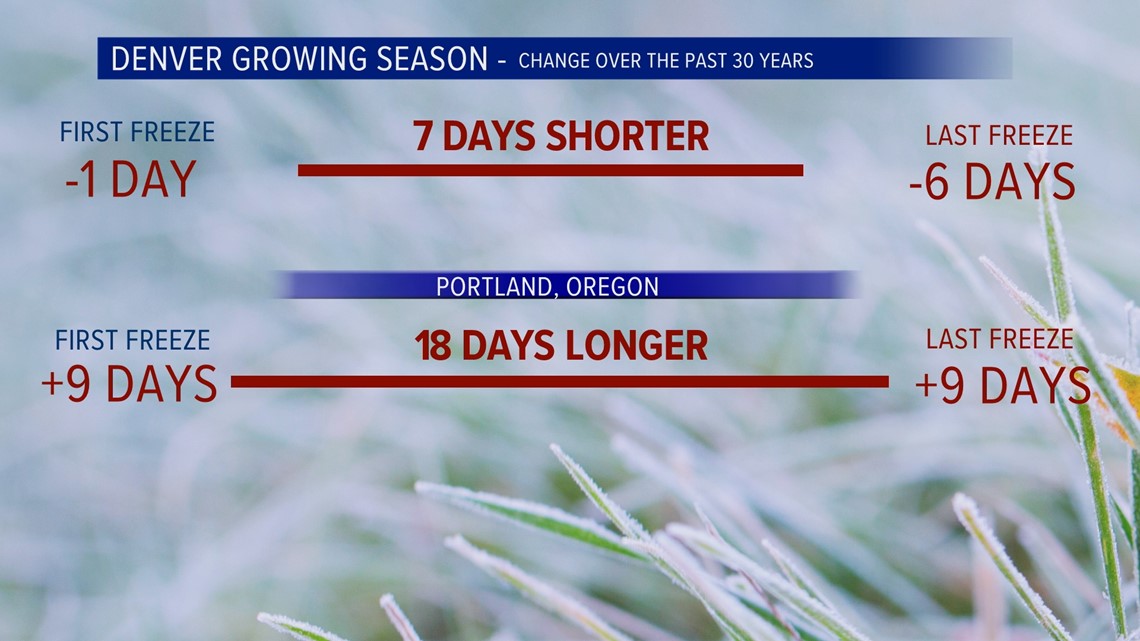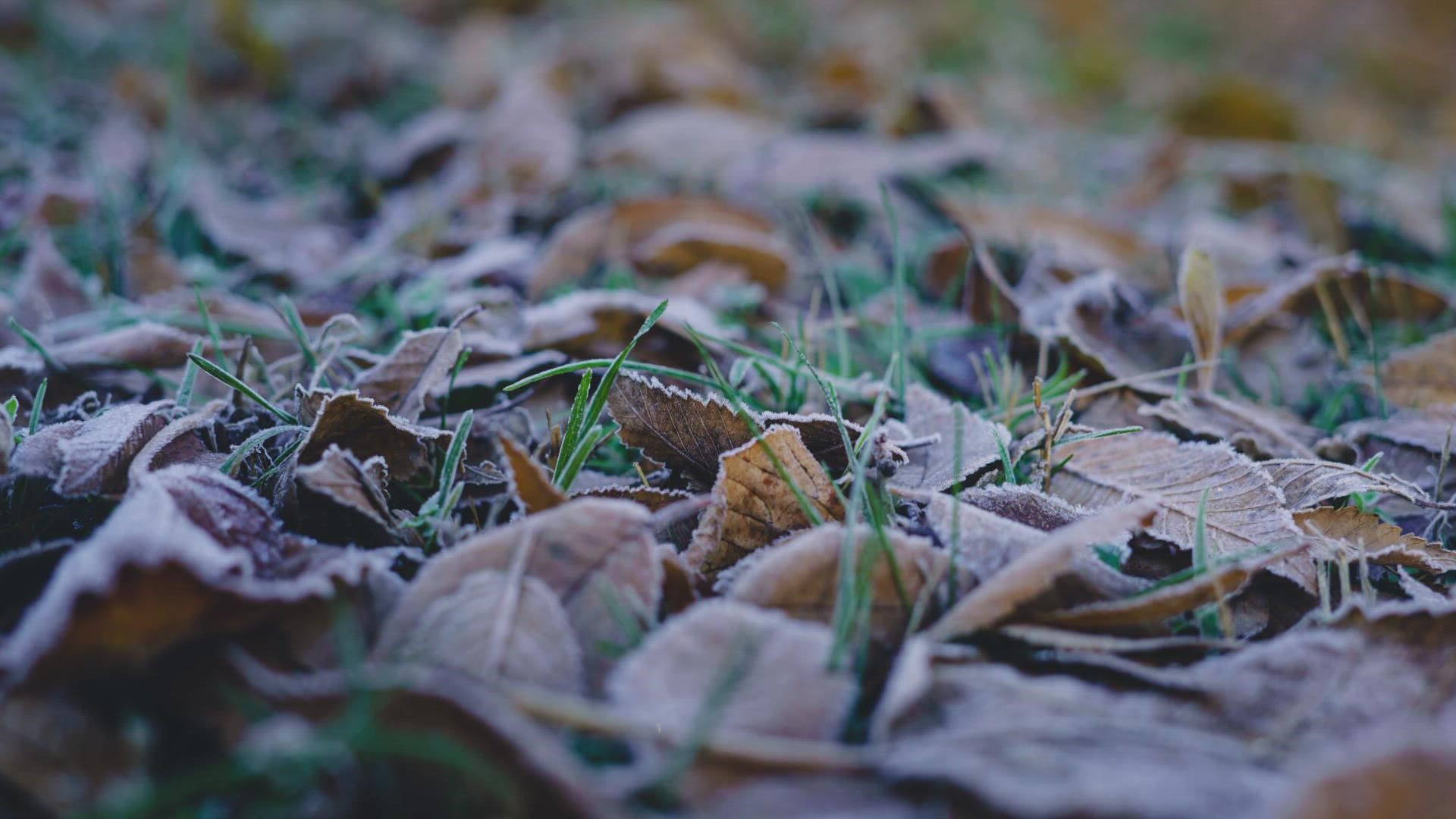BOULDER, Colo. — Colorado’s first freeze warning of the season was issued Wednesday morning, which covered parts of the Yampa Valley including Steamboat Springs.
Another freeze warning is in place for the upper Yampa Valley on Thursday morning.
A freeze warning is issued when the temperatures are forecast to drop down to 32 degrees or colder.
A frost advisory is generally for temperatures between 32 and 35 degrees.
These alerts don’t cover the mountains or the mountain valleys, and they only get issued during the growing season.


“And generally, they use 28 or colder. So, if a temperature dips below 28, that’s typically the end of the growing season,” said National Weather Service (NWS) meteorologist Paul Schlatter.
Sometimes the first freeze of the season can reach down to widespread 28 degree or colder temperatures and end the growing season for a large area, but it is possible for places to get more than one freeze warning in the fall.
Take the Yampa Valley this week. There were a few spots that did drop down to 27 degrees on Wednesday morning, but those lows were not widespread enough for the NWS to consider it a killing freeze that would end the growing season there.
That's why another freeze warning is in place for Thursday morning. The temperatures are not forecast to be quite as cold as Wednesday morning, though so, there will likely be another freeze warning issued in the Yampa Valley the next time freezing temperatures enter the forecast.
Ironically, the morning lows did reach down below 30 degrees back on Sept. 11 in the Steamboat Springs area, but no freeze warning was issued then because the probability of it getting that cold was too low. The forecast was for the temperature to remain in the middle 30s.
The average first freeze in Steamboat Springs is Aug. 25, but it hasn't frozen that early there since 2009.
Freezes in Denver
The average first freeze in Denver comes on Oct. 7. It came a little late last year on Oct. 13, and it will be late again this year, but on average it is actually getting earlier. The average first freeze at Denver International Airport over the past 20 years is Oct. 4.
At the Denver Central Park weather station, the average first freeze is one day earlier over the last 30 years, and the average final freeze is six days later – meaning the growing season in Denver has shrunk by a week over the past 30 years.
That’s the opposite of most places in the country, where the growing season is getting extended. Portland, Oregon, for example, has had its growing season extended by 18 days over the past 30 years.


Schlatter said it's difficult to pinpoint one reason for Denver's departure from the rest of the country, and much of the world for that matter, but he did say that we are more prone to extreme temperature swings due to the dry air and the city's location at the base of the Rocky Mountains.
“When you think about it, average temperatures are warming all around, but to get a freeze it just takes one cold event," he said. "Those extreme temperatures stand out on their own but have a way of blending right into the averages."
The Forecast
The National Weather Service is expecting to issue at least a frost advisory for Denver towards the middle of next week as the coldest storm system of the season moves in on Wednesday and Thursday.
So far, the coldest official temperature in Denver this season is 42 degrees on September 25.
"Outside of the urban heat islands, I would expect a freeze is possible on the plains in places like Greeley and Limon," said Schlatter. "It's way too early to predict a freeze for Denver."
The computer forecast models have been showing Thursday, Oct. 13 as the coldest day, with temperatures ranging from 33 to 40 degrees for low temperatures in Denver.
The storm is currently forecast to be a cutoff-type low pressure system. Those have a tendency to slow and meander, so that cold air push for Denver could get delayed a couple of days.
It's usually not until the storm is 48 to 72 hours out that a freeze can be predicted.
SUGGESTED VIDEOS: Colorado Climate

